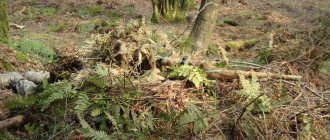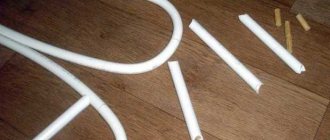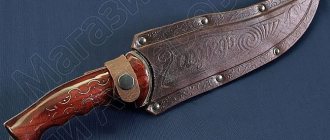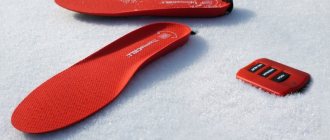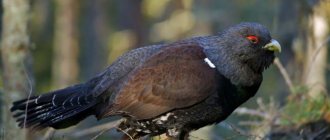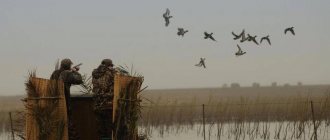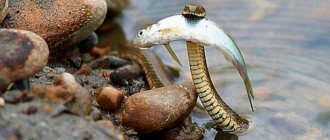How to make a moose decoy with your own hands?
Hunting is a difficult and gambling hobby, considered the prerogative of real men. Especially when it comes to catching a large and dangerous animal, for example, a moose. The main peak of hunting for this animal occurs in September, when the rutting period of elk begins. To make hunting more effective, it is recommended to build an elk decoy with your own hands. This will not only increase the chances of success in the hunt, but will also allow you to go through all the stages of catching an animal yourself, which will increase the pleasure of the process.
Moose hunting on the roar
The beginning of autumn is a special time of year when the main instincts of deer, other than procreation, are dulled. Hunters take advantage of this moment and go hunting.
A distinctive feature by which roaring elk hunting is determined is the sounds made by the animal:
- Similar to a dull, drawn-out roar;
- May resemble grunts and groans;
- They serve as bait for males for females.
Figure 1. Hunting for elk on wabu
The rules for hunting moose with roar are quite simple. 2-3 people take part in it - this number is determined by the possibility of an accidental shot. With a larger crowd of people, due to the noisiness and speed of events, there is a high probability of shooting your fellow man (Figure 1).
Usually, one of the hunters lures the animal, and the second shoots at the animal.
All actions must be coordinated and quick, without delay or hesitation. It is best to shoot at the heart and neck, spine and lungs, to avoid risk - it is best to aim at the shoulder blade area.
The main features of moose hunting on a roar are that:
- During the rutting period, you can get closest to him thanks to his poorly developed vision and dull sense of smell;
- There is no need to carefully comb the land for fresh elk tracks - animals can be lured with a special horn or an imitated sound;
- This representative of the deer is weak to a wound, it immediately falls when a large-caliber bullet hits the middle of the front part of the carcass, but it is still not easy to lay down half a ton of live meat;
- During the mating season, the animal poses an increased danger - if you do not shoot it immediately, the attack of the ungulate will be extremely aggressive.
To have an idea of how the process works, it’s good to watch a moose hunting video in advance, from which you will learn about the habits of the animal, its tracking and prey during the rut.
Electronic moose decoy
The most convenient option for a novice hunter. This is a device with an already recorded elk roar during the rut, and usually there are several sounds made by an elk at once. This is the cry of an elk, with which he challenges his opponent to fight, and the roar of a moose looking for a partner, and the sounds that a young calf makes, etc. Any moose call is activated when you press a button, the device is battery operated, extremely convenient and portable. Moreover, there is even a button to control the volume of the roar sound.
When choosing a decoy, you should listen to it first: many hunters note that the cry of an elk on an electronic decoy may not correspond to the sounds made by the animal when the rutting period begins.
Source
Moose hunting
The roar of an elk can only be heard during the rut; the rest of the time the only sounds of the elk are quiet snorts if the animal is frightened. The roar of different individuals is very different: strong mature animals shout “oo-a” or “oo-oh”, young ones - “o-uh”.
Hunting time depends on the target. If you are interested in elk for trophy purposes, then it is better to start hunting in the first 10 days of the rut, at which time bulls with beautiful trophy antlers come when called. At other times, this luxurious trophy will be pretty damaged by incessant fights with rivals.
- To begin with, it is necessary to determine the location of the rut with maximum accuracy. To do this, you need to listen to the cry of the moose, look for the presence of broken branches, fairly shabby bushes, and also check whether there is fresh moose droppings.
- The most favorable time for hunting elk during the rut is early morning, at which time the animal roars longer, which means it will be easier to track and shoot. This also makes it easier to find a wounded animal. It is better to hunt in dry and clear weather, when there is no rain. When you hear the cry of a moose nearby, you can start to attract it with screams and break branches. Just don’t overdo it, otherwise the animal may understand that it is being deceived and not come out.
- It is better to go on such a hunt together: one beckons, the other shoots. Experienced hunters are able to determine by the roar the age of the animal and its suitability as prey, and, based on this, make a decision about whether it is worth continuing the hunt or whether it makes sense to change the place and look for other game.
Secrets and techniques of hunting elk with decoy
A necessary condition for a successful hunt is not only a properly prepared decoy, but also an understanding of the behavioral characteristics of elk during their rutting period. All the time outside the rut, moose communicate only through quiet snorting, and only during the rut do the males roar. These screams are heard only from an animal of the desired sex - a male moose. Moreover, adult males shout a sound similar to “ua”, and young males shout a sound similar to “oe”
It is also important to choose the right time for hunting: if the goal is trophies, then it is better to arrange it in the first 10 days, because during this period mature individuals with branched antlers, perfect for trophies, respond to the decoy.
After this period, the horns may already be seriously damaged due to fights with rivals.
Source
When do moose start to rut?
The elk rut occurs in the fall, usually when the first frosts arrive. It begins at the end of August - September and lasts about two months. Depending on the severity of the climate, the timing of the start of the rut shifts from the second half of August in the south to mid-September in the northern regions.
In Siberia and the Krasnoyarsk region. In Siberia and the Krasnoyarsk Territory, the moose rut begins mainly in September, although in their southern part this is possible even after the second ten days of August. The peak of the rut, depending on the latitude, usually occurs in the second ten days of September - early October. In the northern parts of this region, the rut can last until the first ten days of November.
In the Leningrad region and Karelia. In the Leningrad region and Karelia, the start of the rut usually occurs at the very end of August. Its peak occurs in the second ten days of September, when the maximum number of individuals is involved in the process, but it ends already in early November. This is due to the characteristics of this northern region in order to involve the maximum number of females.
In the Moscow region and in the middle zone. In central Russia and in particular in the Moscow region, the start of the rut usually occurs at the end of August. Here this period lasts on average about one to one and a half months and ends by mid-October.
In the Urals. In the Urals, the beginning of this period and its duration primarily depend on latitude. In the Southern Urals it is the end of August, and in the Northern Urals it is mid-September. The moose rut here lasts about two months and in the northern parts it can take place at the beginning of November.
In Belarus. In Belarus, the moose rut begins at the end of August, but more often it occurs in September - October. It lasts about a month and ends by mid-October.
In the Penza region. In the Penza region and other southern regions, the beginning of the rut occurs in the second ten days of August and lasts about a month and a half, dying out by mid-late October.
Duration
On average, the duration of the rutting period for moose is about two months. However, how long this period lasts, its beginning and end also depends on weather and climatic factors. So a sharp warming can delay its beginning, and a sharp cooling, on the contrary, push it to the beginning. Among other things, in young males the start of the rut is delayed by 15–20 days.
However, practice shows that once the rut has begun, it is not interrupted by any weather factors. Its duration primarily depends on the severity of the climate in the area. So in the northern regions it lasts for two and a half months, and some young males come to the wad at the end of November.
Important! According to the hunting rules, elk harvest is divided into three periods: for adult males from September 1 to September 30; for all sexually mature groups - from October 1 to December 31; for young animals up to one year - from January 1 to January 15.
How to lure a moose
Having found a clearing trampled by moose, you need to hide and wait. When you hear a moose roar in the pre-dawn hours or at dusk, begin to carefully strike back. Do not do this too loudly, as the animal may be nearby. If no one responds to your call, begin to gradually increase the sound, but not too often. If you still don’t hear an answer, then move to another place, two hundred meters from the previous one, and start beckoning again.
Don’t be afraid to step on a dry branch or make some other sharp sound - the animal will mistake it for the sounds of an opponent and will come out to you. But when moving to another place, you don’t need to sneak on tiptoe; on the contrary, walk, boldly placing your entire sole on the ground, as animals do.
Making a decoy with your own hands
To make an elk decoy yourself, you will need to choose what material it will be made of: cans or birch bark, and then purchase everything necessary for production. Basically, these are improvised means that are easy to find.
Decoy from a jar
To create a decoy for an elk from a jar, you will need a simple tin jar, for example, a coffee or tea jar. Clothesline 60 cm long and a piece of leather or electrical tape. A base is made from a coffee can: a hole is cut in the middle of its bottom into which a rope is inserted with a knot tied at the end.
The can itself is completely wrapped in leather or wrapped with electrical tape. You should put some moss inside the jar.
To make the decoy work, you need to wet the rope with water, grab it with your fingers and move along the rope from bottom to top. The jar itself holds on to the bottom; there is no need to touch the walls. This design makes the same sounds as elk during the mating rut.
Birch bark decoy
You will need to take a piece of birch bark, the thickness of which will be 2 mm; there should be no knots or growths on it. The birch bark is helically cut and straightened, after which a strip 100-170 mm wide is cut out of it. Additionally, 1 more layer of birch bark 120 mm wide is taken, on which 3 small rectangular holes are cut on one side and 3 in the form of triangles on the other. When folded, the triangles should fit into the rectangular holes.
When folded, the triangles straighten out and create a kind of lock on the birch bark tube. The bait is rolled up with the white surface inward.
This creates a cuff for the horn, which is put on birch bark rolled into a tube. You can additionally secure the product with electrical tape. The volume of the scream is adjusted by squeezing and stretching the tube.
How to make a decoy for an elk from scrap materials with your own hands
Decoy from a jar
You will need a tin can (coffee can, for example), a 60 cm piece of clothesline, a piece of leather or electrical tape to cover the entire surface of the can.
We make a hole in the bottom of the jar (more precisely, in its center), and insert a rope with a knot at the end into it. The sound will be similar to a moose cry if the jar is wrapped in leather or duct tape and some moss is placed inside.
How to use this decoy jar? Wet the rope with water, then hold it between your index finger and thumb, and then move it along the rope from top to bottom. Hold the jar by the base without touching the walls. With this decoy you can accurately imitate the sounds of a moose.
Another do-it-yourself decoy - a speaker made of birch bark or a tin can
Remove birch bark about 2 mm thick from the tree without knots, cut it in a helical manner. Then straighten the resulting tape and cut a strip from it with a width of 100 to 170 mm. From the same tree, remove another piece of birch bark 120 mm wide and cut three narrow rectangular holes on it, and three triangular ones on the other side so that they fit into the rectangular ones. Then the triangles are straightened inside the rolled birch bark, forming a lock on the birch bark tube. The decoy is rolled up with a white layer inward. It will be the cuff of the speaker. The birch bark is rolled into a tube, a cuff is put on it; if desired, the cuffs can be attached with electrical tape for greater strength. When you imitate an animal screaming, the volume can be adjusted by squeezing or stretching the tube.
Homemade duck and elk decoy for a hunter
Homemade duck and elk decoy for a hunter
1. DIY duck decoy
The plastic duck decoys produced by our industry have low sound quality, so hunters, as a rule, make them themselves. In this regard, I would like to remind you of the wooden duck decoy that proved itself well in the pre-war years and is undeservedly forgotten in our time and talk about its production.
The resonator blank for the future decoy is turned on a lathe. Dry birch wood is used as material. Using a pencil and a ruler, the workpiece is marked and then cut with a jigsaw along planes AB, BV, VG and GD (Fig. 1). To facilitate this operation, the workpiece is put on a mandrel (a rod with a diameter of 16 mm, clamped in a vice) and sawed along the planes BV and GV approximately to the middle, then removed, put on the mandrel with the other side and sawed to the end.
The sawn outer parts of the workpiece are processed along the planes BV and GV with sandpaper. Using insulating tape, these parts are again secured to the mandrel, sawn along planes AB and GD and then cleaned with sandpaper. The resonator parts made in this way are folded together with the planes BV and GV, fixed relative to each other with insulating tape and processed with a file, as shown in Fig. 2 with a dotted line. In Fig. Figure 3 shows the internal surface of the resonator parts after final processing. To obtain a natural sound and give the semolina water-repellent properties, the resonator parts are coated with alcohol stain, and after drying, with colorless nitro varnish.
The semolina membrane (Fig. 4) is made from tin from any tin can (tin thickness is approximately 0.3 mm). The membrane is inserted between the wooden parts of the resonator; the entire device is fixed with a cambric of a suitable size (Fig. 5). The decoy is adjusted by longitudinal movements of the membrane and cambric relative to the resonator. As can be seen from the description, the decoy is easy to make: all work takes no more than an hour.
Related article: What wallpaper goes with white furniture
2. DIY elk decoy
September. The moose will begin their rut. Many hunters love moose hunting for its beauty and excitement, for the thrill and thrilling sense of danger. A necessary condition for a successful hunt for waba is the skillful work of a jacker. Experienced hunters very plausibly imitate the groans of an elk without any improvised means, just making a kind of mouthpiece out of their palms and pinching their nose with their index fingers. Some moan into the barrel of a gun or into the glass of a kerosene lamp, others into a bottle with a broken bottom. All these methods require some talent from the camber operator, the ability to accurately reproduce the voice of an animal of the required gender and age.
Those hunters who have absolutely no ear for music, who lack the skills and experience in this simple matter, or who simply don’t want to strain their vocal cords, can try making a homemade waba from a tin can. This device, tested in practice by many hunters, is not difficult to make, and the result can exceed all expectations.
For the waba we will need: a tin can (from coffee, from baby food, etc.), a lace or thin nylon clothesline about 60 cm long, electrical tape or a piece of leather equal to the surface area of the can.
The jar can be of any size, the main thing is that the diameter of the hole is slightly smaller than the diameter of the bottom. The best options are not regular canning jars, but jars with a “press-in” lid. But, in the absence of one, you can also take a tin of canned tomatoes. The size of the can affects the resulting sound - the smaller it is, the higher the sound, and, accordingly, the larger it is, the lower and louder the “moan”.
Having obtained a suitable jar, you need to make a hole in the very center of its bottom. The hole should be the same size as the thickness of the lace. A rope with the end tied in a knot is inserted into the resulting hole (so that it does not fall out). The elementary waba is ready!
Related article: Procedure for cleaning a gas water heater
Having previously moistened the lace in water, we hold it between the thumb and forefinger and run it along it from top to bottom. In this case, the jar should be held only by the base, without touching the walls. The result is a sound very similar to the moaning of an elk.
The device can be improved by wrapping it with electrical tape or covering it with leather. Then the sound made by the can will lose its metallic tint and become more natural. In addition, in order to bring the sound closer to the desired timbre, you can fill a jar with loose moss.
Good luck with your experiments!
PS The world collection of decoys apparently contains many hundreds of samples, including decoys of ancient work and decoys of modern production.
The picture shows decoys intended for study:
